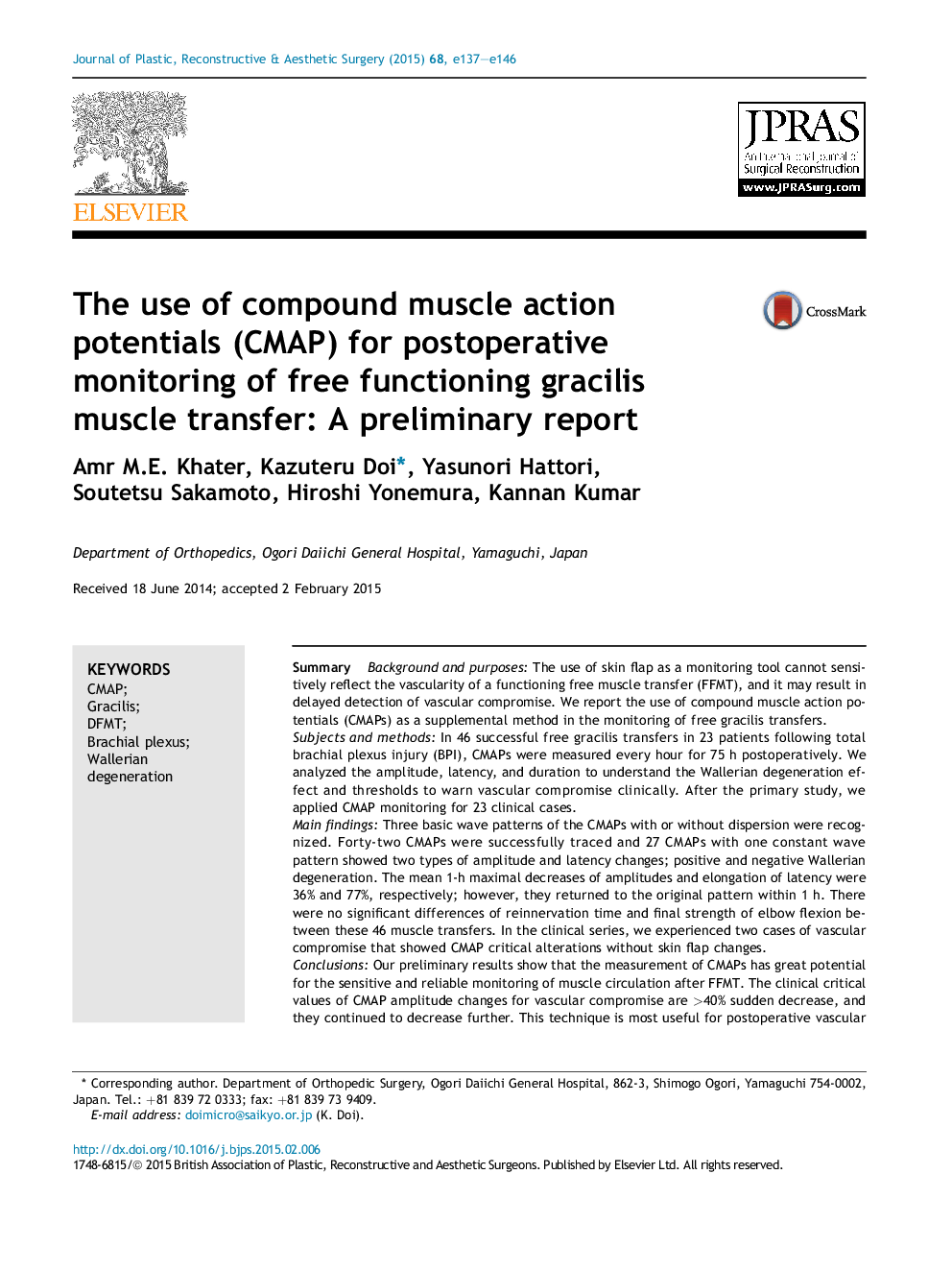| کد مقاله | کد نشریه | سال انتشار | مقاله انگلیسی | نسخه تمام متن |
|---|---|---|---|---|
| 4117260 | 1270300 | 2015 | 10 صفحه PDF | دانلود رایگان |

SummaryBackground and purposesThe use of skin flap as a monitoring tool cannot sensitively reflect the vascularity of a functioning free muscle transfer (FFMT), and it may result in delayed detection of vascular compromise. We report the use of compound muscle action potentials (CMAPs) as a supplemental method in the monitoring of free gracilis transfers.Subjects and methodsIn 46 successful free gracilis transfers in 23 patients following total brachial plexus injury (BPI), CMAPs were measured every hour for 75 h postoperatively. We analyzed the amplitude, latency, and duration to understand the Wallerian degeneration effect and thresholds to warn vascular compromise clinically. After the primary study, we applied CMAP monitoring for 23 clinical cases.Main findingsThree basic wave patterns of the CMAPs with or without dispersion were recognized. Forty-two CMAPs were successfully traced and 27 CMAPs with one constant wave pattern showed two types of amplitude and latency changes; positive and negative Wallerian degeneration. The mean 1-h maximal decreases of amplitudes and elongation of latency were 36% and 77%, respectively; however, they returned to the original pattern within 1 h. There were no significant differences of reinnervation time and final strength of elbow flexion between these 46 muscle transfers. In the clinical series, we experienced two cases of vascular compromise that showed CMAP critical alterations without skin flap changes.ConclusionsOur preliminary results show that the measurement of CMAPs has great potential for the sensitive and reliable monitoring of muscle circulation after FFMT. The clinical critical values of CMAP amplitude changes for vascular compromise are >40% sudden decrease, and they continued to decrease further. This technique is most useful for postoperative vascular monitoring of a buried muscle flap, and it is proven to be of clinical significance in current vascular compromised cases.Level of evidenceLevel Ⅳ, Case Series.
Journal: Journal of Plastic, Reconstructive & Aesthetic Surgery - Volume 68, Issue 7, July 2015, Pages e137–e146